|
|
|
|
|
THE OBSERVER
|
| |
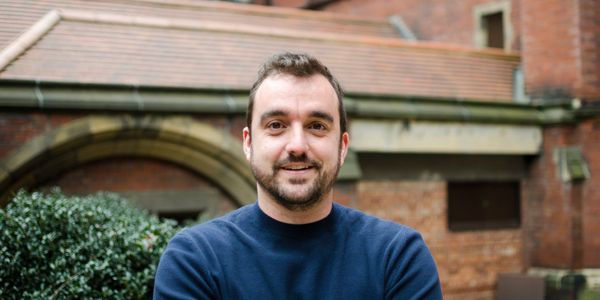
|
| |
|
Niels Dabaut
Geographer, Director at Regionaal Landschap Westhoek vzw, Visiting Professor at University of Antwerp and Founder of Mazomos Landscape Consultants BV
|
|
During my PhD-research I have walked with a lot of people around place I barely knew myself. Every walk was a new adventure, an expedition and about discovering the place through the eyes of my companion. Realizing how different people see and read the landscape through different lenses helped me to understand how important finding a ‘common language’ is. This ‘common language’ is necessary to be able to talk about and debate landscape, its past, present and future with people from different backgrounds, with different professions or with different opinions.
[+]
|
| |
|
| |
|
MOSAIC
|
| |
|
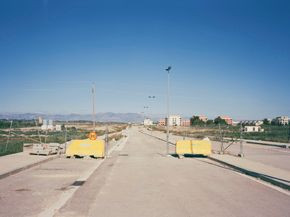
|
|
|
The 20th anniversary of the Landscape Observatory of Catalonia!
|
|
|
|
On 1 March 2025, the Landscape Observatory of Catalonia will celebrate its 20th anniversary since it began operating in the Hospici building in the city of Olot. Working shoulder to shoulder with the Catalan Ministry of Territory, Housing and Ecological Transition, Catalan universities, professional groups and all kinds of organisations since 2005, the Landscape Observatory has focused on identifying and characterising the landscapes of Catalonia, producing a rich body of knowledge about landscape (the basis for making decisions on landscape) and sharing it with institutions and society at large, defining landscape quality objectives, making use of the instruments provided for in the Landscape Law (landscape catalogues, landscape charters and so on), lending support to various ministries of the Government of Catalonia and the local community and helping to position Catalonia as one of the European benchmarks for landscape-related policies. The year 2025 also marks the 25th anniversary of the Council of Europe’s approval of the European Landscape Convention and the 20th anniversary of the enactment of the Landscape Law of Catalonia.
|
|
|
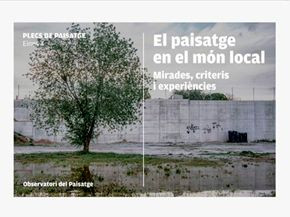
|
|
|
The Landscape Observatory’s new publication: 'El paisatge en el món local'
|
|
|
|
The Landscape Observatory has just published 'El paisatge en el món local. Mirades, criteris i experiències' (“Local landscape: perspectives, criteria and experiences”). This new book compiles most of the contributions made during four courses on local landscape management and planning organised with all four Catalan provincial councils between 2019 and 2022 and the international seminar “Governar el paisatge per ordenar el territory” (“Governing the landscape to plan the territory”), organised jointly in 2023 with what was then the Catalan Ministry of Territory. The book is divided into seven sections: 1. The landscape, a meeting point for multidisciplinary and integrative policies; 2. Governing local landscapes; 3. Planning and acting in the urban landscape; 4. Borders, infrastructures and accesses; 5. Planning and managing open landscapes; 6. Rural landscapes from a local perspective; 7. Landscape and heritage as catalysts for local development. The publication brings together different perspectives, sensitivities, perceptions and interpretations of landscape that are key to building quality landscapes that improve the wellbeing of the population, create economic opportunities and revitalise the territory culturally and socially.
|
|
|
|

|
|
|
The landscapes of the Volta Ciclista Catalunya 2025
|
|
|
|
The Volta Ciclista a Catalunya is a historical bicycle race that dates back over a century. Beyond its obvious sporting appeal, it also serves as a platform to showcase the diversity and values of Catalonia’s landscapes, amplified by media outlets from as many as 190 countries that follow it. Aware of this potential, the Landscape Observatory is working together with the organisation Volta Ciclista a Catalunya to highlight the landscapes along the route of each stage of both the men’s race (from 24 to 30 March 2025) and the women’s race (from 6 to 8 June 2025). As part of this effort, it is preparing the section “Landscapes of the day”, which will feature a combination of photographs, maps and descriptions. This material will be used for the media-book provided to accredited journalists and for the race’s website and social media accounts.
|
|
|
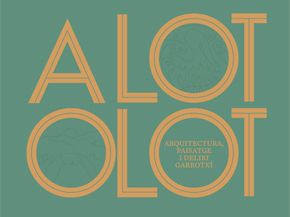
|
|
|
The Landscape Observatory and Olot City Council publish 'Alot Olot. Arquitectura, paisatge i deliri garrotxí'
|
|
|
|
Architects Eduard Callís and Guillem Moliner and photographer Roger Serrat-Calvó are the authors of this book published by the Landscape Observatory of Catalonia, Olot City Council and the Regional Archive of La Garrotxa. The character of the landscape and architecture of the city of Olot and its surroundings is the focus of this visual essay, entitled Alot Olot. Arquitectura, paisatge i deliri garrotxí (“Alot Olot: architecture, landscape and Garrotxan delight”). Character is a key concept in landscape, and as Pere Sala writes in the introduction, the book “ingeniously and rigorously celebrates and praises the character of the city and other spots in La Garrotxa. Eduard Callís, Guillem Moliner and Roger Serrat-Calvó show readers their unique way of seeing Olot through its personality, its face—meaning its landscape—and above all what seems most commonplace to us”.
The exhibition of this book can be seen until 31 January 2025 at the Regional Archive of La Garrotxa and [the book (in Catalan) can be downloaded for free on the Landscape Observatory’s website.
|
|
|
|
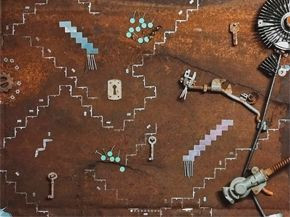
|
|
|
Exhibition by Roger Romagosa on urban margins
|
|
|
|
“Vestigis, volcans i ferralla” (“Vestiges, volcanoes and scrap metal”) is the title of an exhibition of work by the artist Roger Romagosa that will be on display at Can Trincheria in Olot from 6 to 28 February. Romagosa was an artist-in-residence at Faberllull in March 2024. His work focuses on the hierarchisation of landscapes and the exhibition showcases pieces created using materials found in urban margins to symbolise the feelings these places evoke and highlight their intrinsic value. The exhibition has been made possible in partnership with Faberllull, La Garrotxa Volcanic Zone Natural Park and the Landscape Observatory of Catalonia.
|
|
|
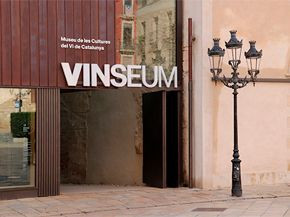
|
|
|
Partnership with the Museu de les Cultures del Vi de Catalunya
|
|
|
|
Vinseum Museu de les Cultures del Vi de Catalunya, a museum on wine cultures in Catalonia located in Vilafranca del Penedès, opened new facilities in November 2024. The Landscape Observatory collaborated on the content of the new exhibition area, providing information on the diversity, values and dynamics of Catalonia’s wine-producing landscapes. The museum aims to serve society by promoting the wine culture of Catalonia and positioning it as a catalyst for sustainable and democratic territorial development. It strives to recover, preserve, research, interpret and spread information about Catalonia’s winemaking heritage and help to promote the region.
|
|
|
|
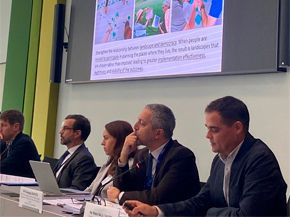
|
|
|
The Landscape Observatory delivers the keynote address at the 12th Conference on the Implementation of the Council of Europe Landscape Convention
|
|
|
|
The 12th Conference on the Implementation of the Council of Europe Landscape Convention was held in Strasbourg on 29-30 October 2024. The event aimed to “relaunch” the European Landscape Convention as part of the new Reykjavik Process, meaning that it was intended to strengthen cooperation among the states that signed the Convention and make landscape quality essential in contributing to social justice, human rights and the environment. The director of the Landscape Observatory, Pere Sala, was invited to deliver the keynote address on the European Landscape Convention’s critical role in providing an innovative response to global challenges, arguing that “landscape is a modern, fresh and innovative concept that is crucial for addressing such fundamental challenges as climate change, the energy transition, social cohesion and equity, territorial inequalities, health and wellbeing, food security, the maintenance of biodiversity and the conservation of tangible and intangible heritage”. In a subsequent session, Veerle van Eetvelde, a professor of Landscape Science at Ghent University (Belgium), Natalia Kobylarz, a lawyer at the European Court of Human Rights (France) and Amy Strecker, a professor at the School of Law at University College Dublin (Ireland), held an enriching discussion moderated by Bas Pedroli, a professor at Wageningen University (The Netherlands).
|
|
|
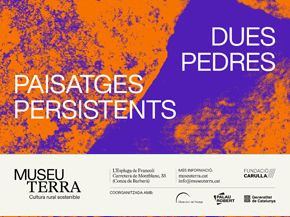
|
|
|
The exhibition "Two Stones. Persistent Landscapes" continues its second tour at the Museu Terra
|
|
|
|
This Friday, January 24 at 6:00 p.m., the Museu Terra de l'Espluga de Francolí will host the opening of the exhibition that will be open to visitors throughout 2025. The educational proposal "When stones speak" will also be available to all schools throughout the year, and various parallel activities will be scheduled. The exhibition aims to show the richness and diversity of landscapes structured by dry stone, highlight this ancient and universal technique, and claim its validity and persistence. Catalonia is one of the richest areas in the world in dry stone constructions. Dry stone not only represents one of the most characteristic features of our landscapes and an extraordinary heritage legacy, but it is, above all, a true source of inspiration and an exceptional container of those values that will serve us so well to face the challenges of today's world. The exhibition, promoted by the General Directorate of Dissemination, in collaboration with the General Directorate of Popular Culture and Cultural Associations and curated by the Landscape Observatory of Catalonia, could be visited at the Palau Robert between December 2023 and June 2024, and at the Palau Oliver de Boteller, from July to December 2024.
|
|
|
|
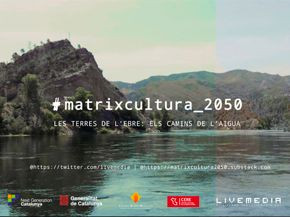
|
|
|
Landscapes of Terres de l’Ebre and Eix del Besòs through Matrixcultura2050
|
|
|
|
Matrixcultura2050 is a project promoted by the cultural association Livemedia, which has been advocating for culture as a matrix of sustainability since 2020, focusing on territory as a cultural landscape. It currently concentrates its work on Terres de l’Ebre and the Eix del Besòs. Using online video and other communication technologies, it highlights the value of artistic, cultural and local initiatives related to the cultural preservation of these landscapes based on local knowledge. For Terres de l’Ebre, for example, the Ebro River is taken as a backbone, with water serving as a force shaping the landscape. For the Eix del Besòs, the project stresses the need to recover the Besòs River as a cultural axis and element unifying the cities through experiential and creative research on the relationship between society and the ecosystem that has shaped it, as well as the memory of work and the territory. A series of actions have been pursued with local organisations and actors in both areas, including scenes, discussions and interventions that lead to narratives on sustainability and the cultural preservation of the landscape and the production of a series of documentary videographies in audiovisual essay format.
|
|
|
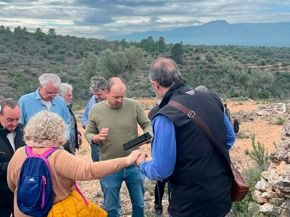
|
|
|
Getting to know the dry stone landscapes of Tivenys
|
|
|
|
The Landscape Observatory joined forces with the Catalan Ministry of Culture, the Centre d’Estudis Territori Inhòspit and Tivenys City Council to organise a seminar entitled “Coneixent el patrimoni de la pedra seca de Tivenys” (“Getting to know the dry stone landscapes of Tivenys”), which was held on Saturday 23 November 2024. Over 40 people participated in the seminar, which included two initial presentations by the Landscape Observatory and the Centre d’Estudis Territori Inhòspit to explain the Wikipedra and the work being done in Tivenys to publicise its landscape, characterised by dry stone. The second part was developed on the ground, where several dry stone constructions were visited and a workshop was held to learn how to use the Pedra Seca mobile application.
|
|
|
|
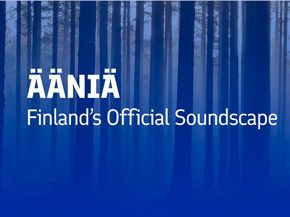
|
|
|
Ääniä: the official soundscape of Finland
|
|
|
|
Finland is the first country in the world to create an official national soundscape. Composed by Lauri Porra, the musical work was announced on 6 December 2024, Finland’s Independence Day, in a press release issued by the Finnish government. Its title, Ääniä, means “sounds” or “voices” in Finnish and reflects the country’s deep connection to nature and its cultural heritage.
Through a collection of 15 compositions, Ääniä provides a unique audio journey, inviting listeners to explore the country’s landscapes and seasons and the Finnish way of life.
According to the composer, it is not music to be listened to in the traditional sense, but rather a sound work that aims to describe mental and physical spaces, impressions and locations.
|
|
|
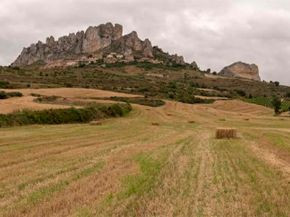
|
|
|
The draft bill on landscape in La Rioja is approved
|
|
|
|
On 3 December, the Government Council of La Rioja passed the draft of the Landscape Law of La Rioja, which will be sent to the Parliament of La Rioja to begin regulatory processing. The law aims to legally recognise the landscape as an integral element of quality of life and as an essential component of heritage culture and identity. It also seeks to establish a specific legal framework for adopting criteria for taking legal action to achieve landscape quality objectives, balancing the preservation of landscape heritage with the economic and social development of the autonomous community of La Rioja. This law was drafted in compliance with the European Landscape Convention and includes the creation of a landscape observatory within the autonomous community.
|
|
|
|
|
| |
 |
| |
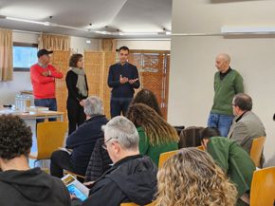
|
|
|
7th Working Meeting of Territories for the Landscape in Alt Empordà |
|
|
|
On November 21, 2024, the 7th Working Meeting of Territories for the Landscape took place in Capmany (Alt Empordà), organized by the Landscape Observatory of Catalonia and the Regional Council of Alt Empordà, with the collaboration of the Capmany Town Council. The aim of the meeting was to reflect on how landscape charters and plans can contribute to a tourism model based on landscape values. The meeting was attended by 39 political and technical representatives from various local landscape initiatives in Catalonia. In the morning, the meeting focused on analysing different landscape management experiences that prioritize landscape values, which led to an engaging debate. In the afternoon, the group of attendees moved to Sant Climent Sescebes to visit an area with significant landscape values that is facing issues of tourist overcrowding.
|
|
|
|
|
|
DIGITAL LANDSCAPE
|
| |
|
|
|
Red Temática sobre Paisajes Industriales
|
|
|
|
Formed by 11 research groups from different universities, the Red Temática sobre Paisajes Industriales (“Thematic Network on Industrial Landscapes”) (RT-PAIND) investigates the transformation of industrial landscapes during deindustrialisation.
|
|
|
|
|
|
|
| |
|
PUBLICATIONS OF INTEREST
|
| |
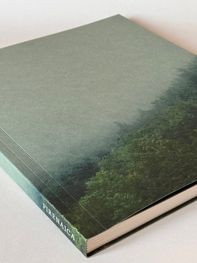
|
|
|
|
Pirenaica
|
|
|
Oriol Clavera, 2024
This photobook by photographer Oriol Clavera contains images taken in different parts of the Catalan Pyrenees over the last 14 years. It is a journey into the wild essence of the Pyrenees, exploring the relationship between human beings and mountains, the mark they leave on each other and how the latter imbues the former with its qualities.
|
|
|
|
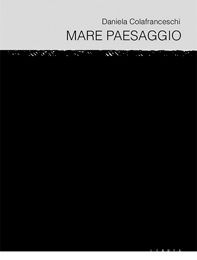
|
|
|
|
Mare paesaggio
|
|
|
Daniela Colafranceschi. Melfi: Libria, 2024. ISBN: 978-88-67643660.
To speak about the land is also to speak about the sea. This book approaches the seascape as an objective relational spatial structure, an expression of social practices and ways of experiencing it that is in constant dialogue between perception, connection, network system, elements, conditions, organisations and customs. It is a comprehensive geography of spaces and horizons of meaning that define the sea as a place. The landscape contains the sea and the sea does not break with the landscape. The book includes images of collages made by the author.
|
|
|
|
|
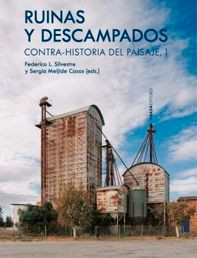
|
|
|
|
Ruinas y descampados Federico L. Silvestre; Sergio Meijide (eds.). Madrid: Abada Editores, 2024. ISBN: 978-84-19008-56-5
|
|
|
Federico L. Silvestre; Sergio Meijide (eds.). Madrid: Abada Editores, 2024. ISBN: 978-84-19008-56-5
This book is the result of the seminar of the same name that involved several internationally renowned thinkers and specialists in landscape theory and practice. It demonstrates the importance of ruins and wastelands in fields of study linked to landscape, art and contemporary thought in general, with a particular focus on southern Europe. The Landscape Observatory was actively involved in both in the seminar and the book. One of the chapters is written by Pere Sala i Martí, the director of the Landscape Observatory.
|
|
|
|
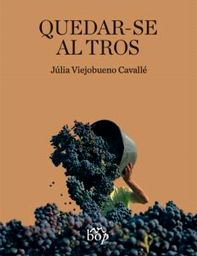
|
|
|
|
Quedar-se al tros
|
|
|
Júlia Viejobueno. [Alella]: ViBop Edicions, 2024. ISBN: 978-8412800043.
With a refined, literary gaze, this young farmer and writer details a defining moment in her life: after having studied literature at the University of Barcelona, she decided to return to Priorat and live in her village, La Figuera, to take care of her family’s land. The author explains her relationship with its landscape, with nature and with the different types of work she does in the field. She describes the farmer’s skill in ploughing and the inherited culture necessary for farming and warns of the hardship and vulnerability inherent in being a farmer.
|
|
|
|
|
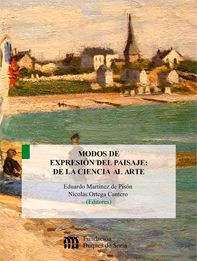
|
|
|
|
Modos de expresión del paisaje: de la ciencia al arte
|
|
|
Eduardo Martínez de Pisón and Nicolás Ortega Cantero (eds.). Soria: Fundación Duques de Soria, 2024. ISBN: 978-84-09-63806-2. Available here.
This book gathers the presentations of the seminar of the same name held in 2023 and organised by the Landscape Institute of the Duques de Soria Foundation. Edited by Eduardo Martínez de Pisón and Nicolás Ortega Cantero, it presents various enquiries into the various ways of expressing landscape, from science to art.
|
|
|
|
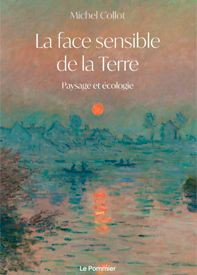
|
|
|
|
La face sensible de la Terre. Paysage et écologie
|
|
|
Michel Collot. Paris: Le Pommier, 2024. ISBN: 978-2-7465-2789-8.
In this essay, Michel Collot shows the living and intimate bonds formed between people and nature within the landscape, the true sensitive face of the Earth. Drawing on the great works that have profoundly transformed the experience and expression of landscape, he takes an eco-centric point of view, distancing himself from the anthropocentric and egocentric vision that has led to environmental degradation. Thus, Collot reveals the landscape not just as a natural environment to be preserved, but also as a social and cultural asset to be developed.
|
|
|
|
|
|
|
|